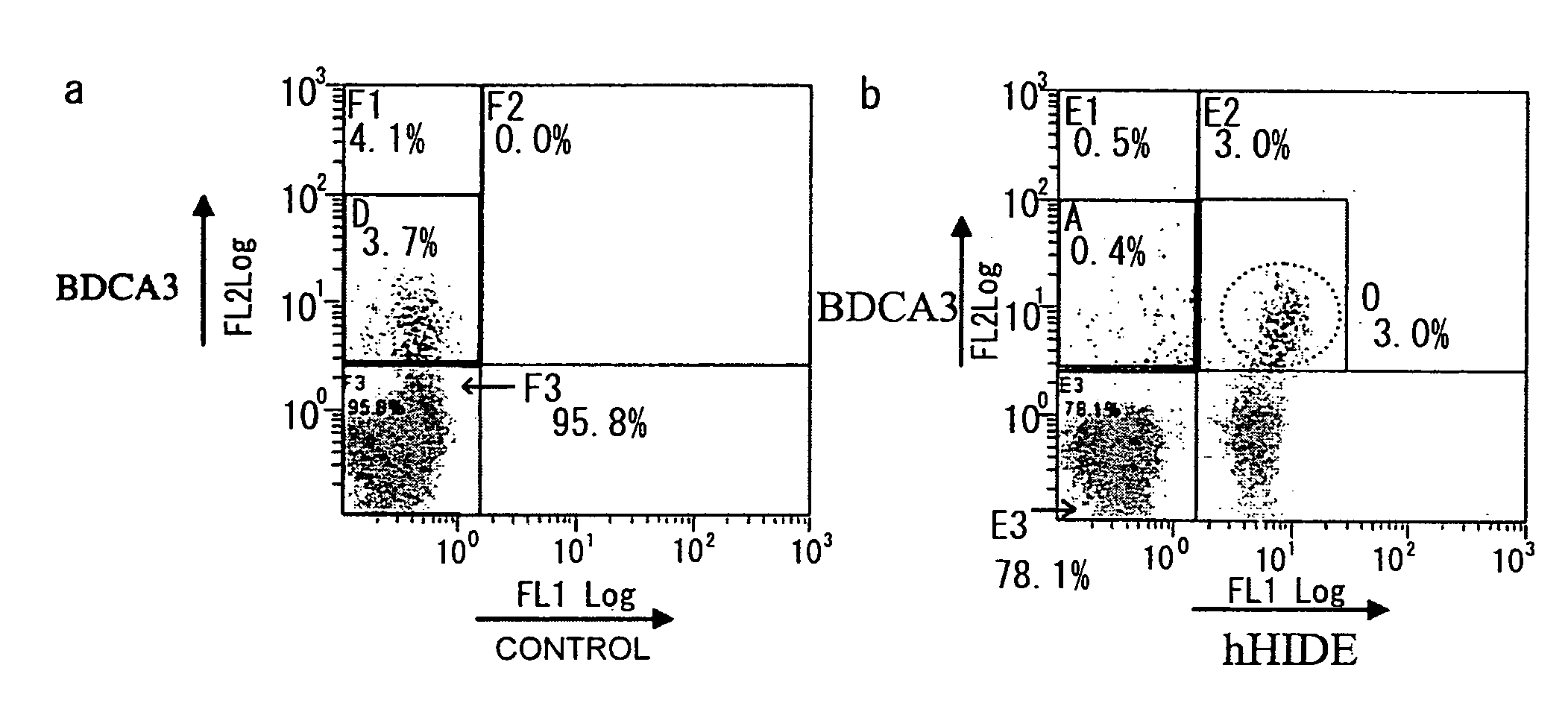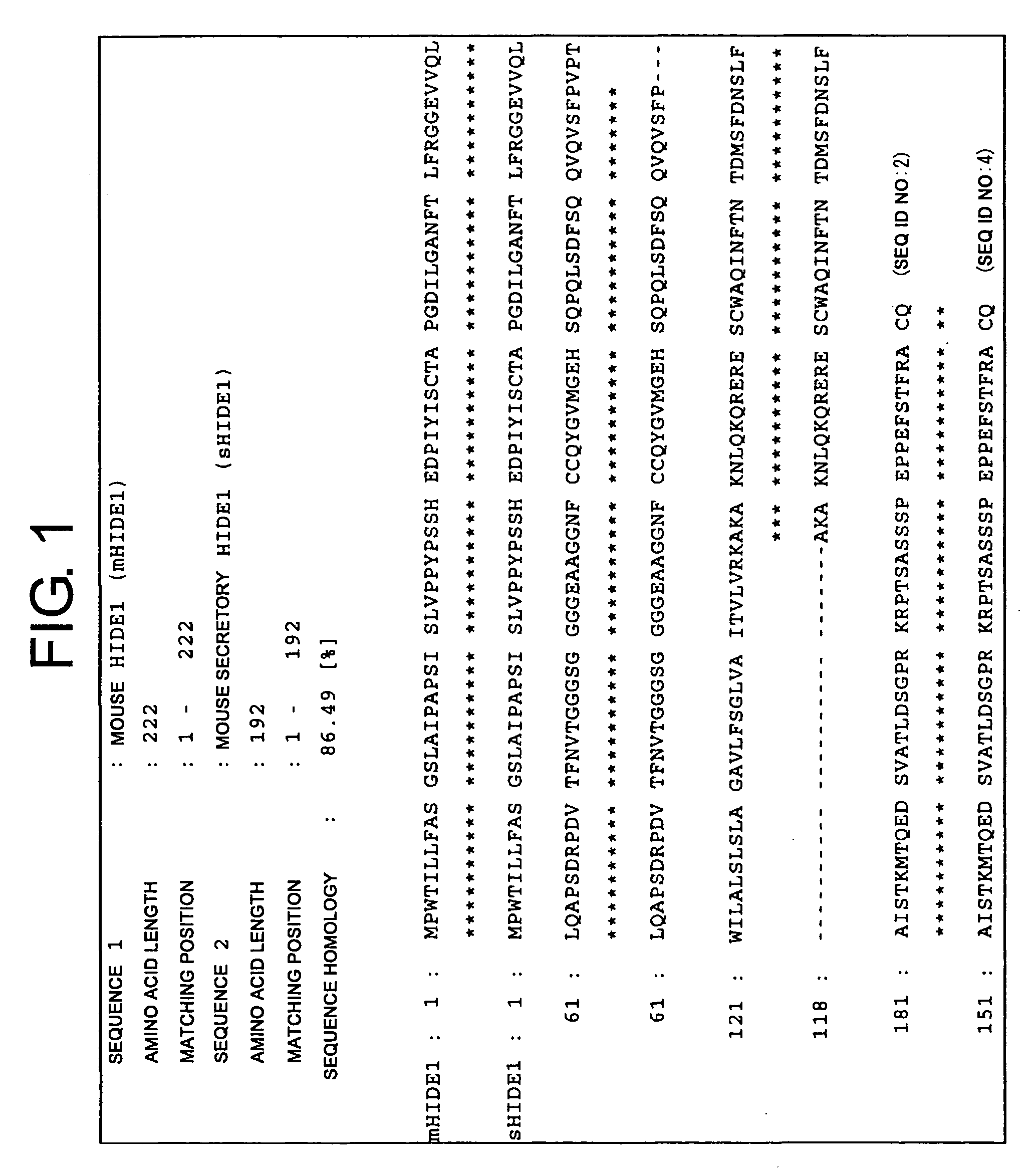Methods for Isolating Monocytes
a monocyte and anti-mouse technology, applied in the field of monocyte anti-mouse detection antibodies, can solve the problems damage to cells, and achieve the effect of increasing the chance of bacterial contamination
- Summary
- Abstract
- Description
- Claims
- Application Information
AI Technical Summary
Benefits of technology
Problems solved by technology
Method used
Image
Examples
examples
1. Preparation of Anti-HIDE1 Antibodies
[0172]Monoclonal antibodies against a human homolog of HIDE1 were prepared by the following procedure: First, PCR was used to amplify a human HIDE1 gene from a placental cDNA library. The yielded PCR product was cloned into pcDNA3.1 (Invitrogen), an expression vector for cultured animal cells (pcDNA-hHIDE1). In the constructed vector, the C terminus of human HIDE1 (hHIDE1) is fused with a Myc tag. Cells of the human cultured cell line 293T were transiently transfected with pcDNA-hHIDE1 using Lipofectamine 2000 (Invitrogen), and the yielded cells expressing hHIDE1 were used as antigens to immunize Balb / C mice. Lymphocytes collected from the lymph nodes of the immunized mice were fused with Myeloma P3U1. After ten days, supernatant from each clone cell was collected as samples. Cell supernatants that reacted with the hHIDE1 -expressing cell line were selected by flow cytometry (FCM). Thus, hybridomas producing anti-HIDE1 antibodies were obtained....
PUM
| Property | Measurement | Unit |
|---|---|---|
| volume | aaaaa | aaaaa |
| molecular weight | aaaaa | aaaaa |
| pH | aaaaa | aaaaa |
Abstract
Description
Claims
Application Information
 Login to View More
Login to View More - R&D
- Intellectual Property
- Life Sciences
- Materials
- Tech Scout
- Unparalleled Data Quality
- Higher Quality Content
- 60% Fewer Hallucinations
Browse by: Latest US Patents, China's latest patents, Technical Efficacy Thesaurus, Application Domain, Technology Topic, Popular Technical Reports.
© 2025 PatSnap. All rights reserved.Legal|Privacy policy|Modern Slavery Act Transparency Statement|Sitemap|About US| Contact US: help@patsnap.com



